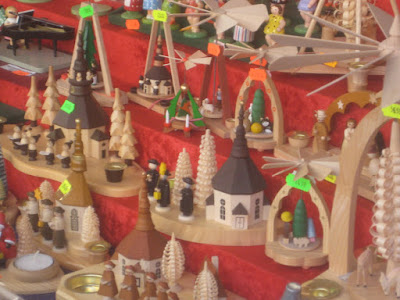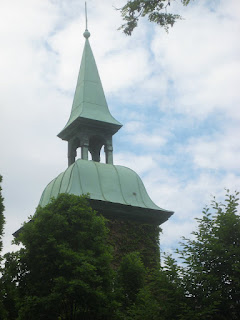One of the things I like most about living here is the food. Not the stereotypical Bavarian or German cuisine that you might think of, although that's not bad in moderation. What I love is how seriously they take quality control. Both government agencies, as well as private watchdog groups, constantly check that the listed ingredients match what's actually in the package. They take food quality very seriously.
As a result, you'd think that I'd never doubt the veracity of the packaging. You'd be wrong. If you want organic meat, you pay a fortune. Don't eat a lot of meat in my daily life, so during holidays, I often go whole hog, as it were.
But in this case I decided to cook duck. My mother says the first time she ate duck was when we lived in Munich in the early 70s. Have had bad results cooking dry turkey. When the cooking's up to me, I prefer duck.
I'm not the only one who questions whether the duck was really organic, but I thought I might be the only one only asking the company for some sort of assurance. I was wrong. They were ready for the likes of me.
First, they fill me in on the history of serving goose in Germany. Why are they talking about serving goose? I guess there's only one form letter for goose/duck. Allegedly, the Germans borrowed the tradition from the English who started eating goose because it's what Elizabeth I was eating when she found out about the defeat of the Spanish Armada. Am not going to let my mind wander for too long and imagine the horrible alternatives of what she might've been eating instead. Not going to do it.
The Germans started following Elizabeth's lead and eating goose around 1900, but we're not eating goose. It's a duck. Where's my form letter for the history of eating duck?
Never mind. Next, they assure me that the duck was raised on the nearest farm. If you consider Pfarrkofen in Lower Bavaria the nearest farm. Well, it's close enough that they insist unnecessary delivery travel is avoided by using this family-owned farm.
The normal lifespan of such a bird is given as 12 weeks, while my duck lived to the ripe, old age of 24 weeks. And then they make a special point that the animals are not force-fed, have plenty of room to run around and eat food only from the region. Can I really believe all of this? Well it is a moderately convincing form letter. They end with a nice closing touch. Because their geese/ducks aren't injected with antibiotics and/or other chemicals, they're sure I'll be able to tell the difference when I bite into the 'tastier, softer, and juicier' meat. Meat unlike that of what they call a Turbobird.
Really? You think I'll taste the difference? Why'd I write my original query if I thought I could taste the difference.
But the form letter achieved its goal. I bought the mentally well-rested, able to exercise duck, and here's the finished result:

So the only question left unanswered is: How did it taste? It was delicious.
Frohe Weihnachten/Merry Christmas
















































